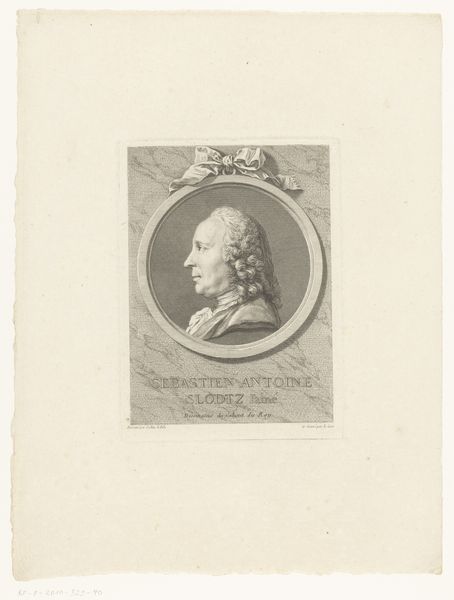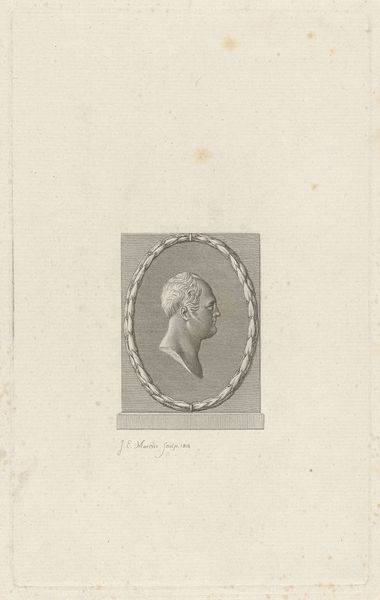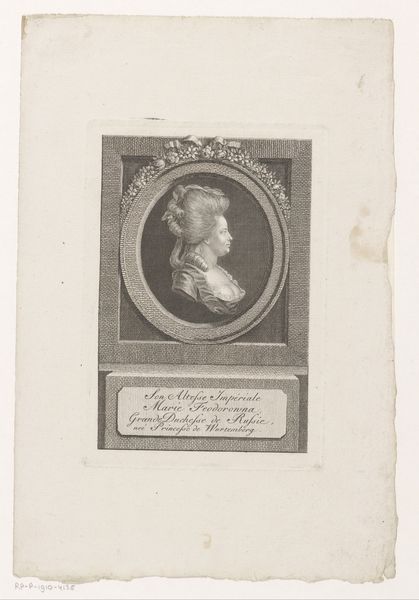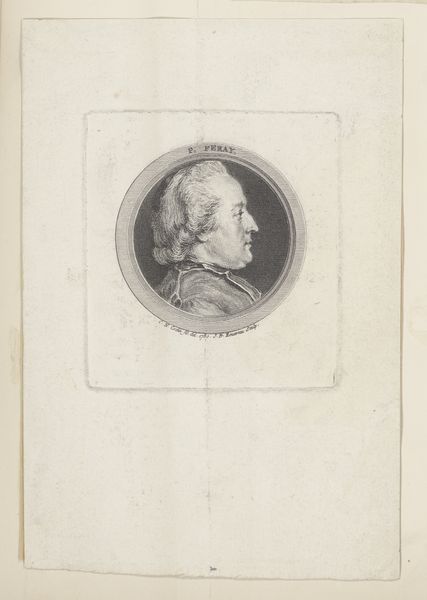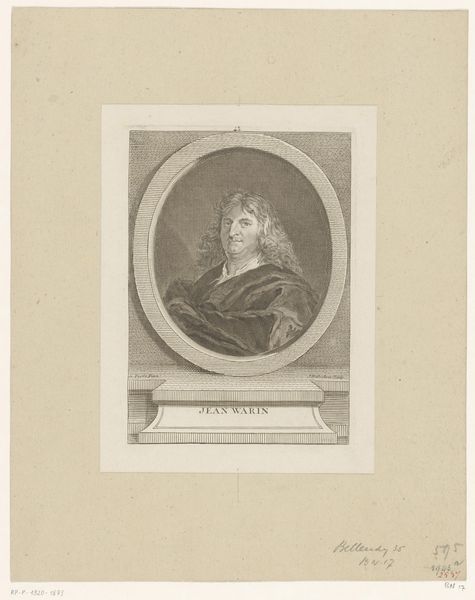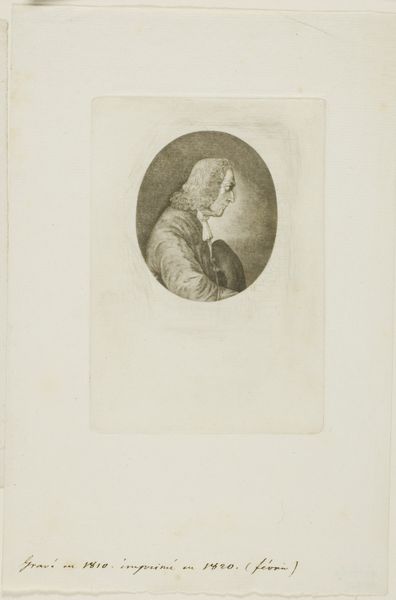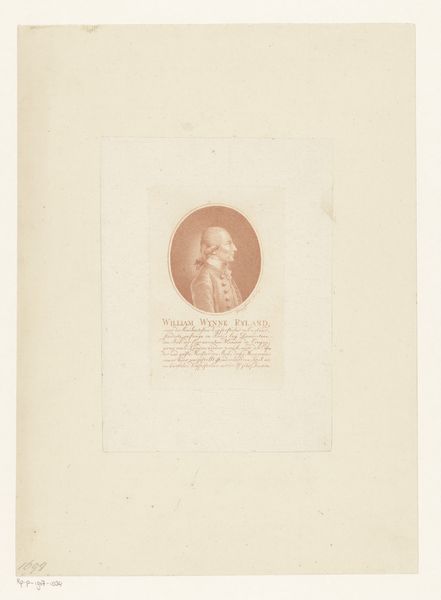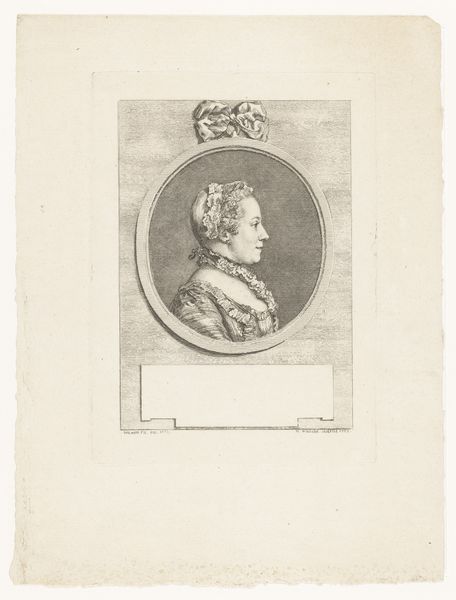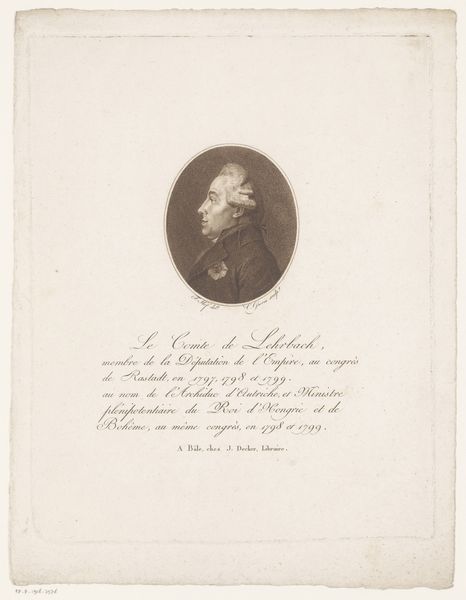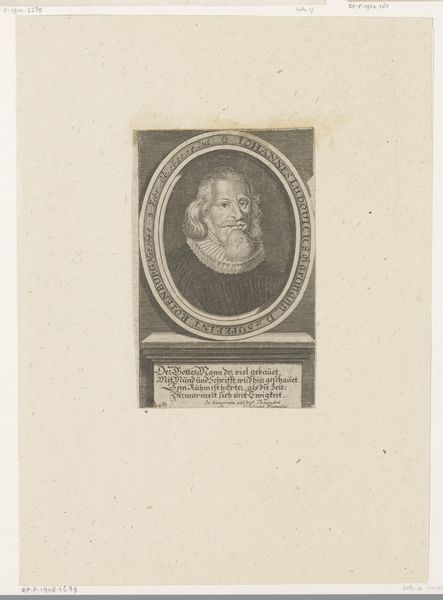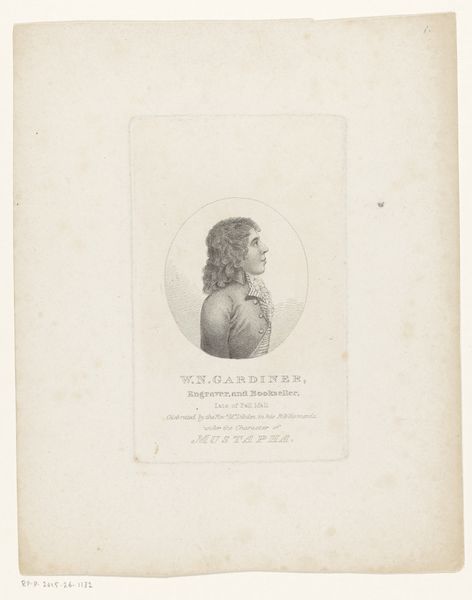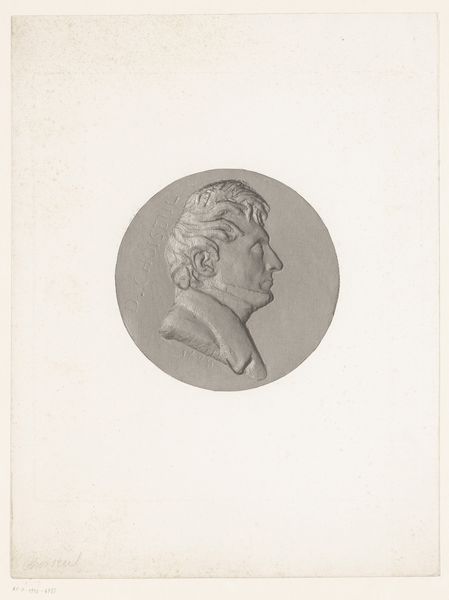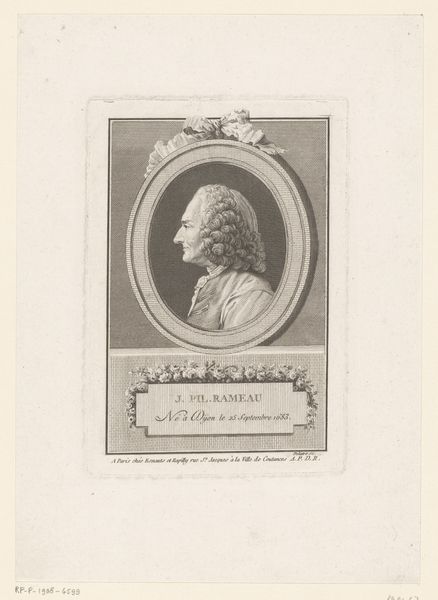
drawing, paper, engraving
#
drawing
#
neoclacissism
#
aged paper
#
light pencil work
#
ink paper printed
#
light coloured
#
old engraving style
#
paper
#
engraving
Dimensions: height 217 mm, width 172 mm
Copyright: Rijks Museum: Open Domain
Editor: This is "Portret van Louise Menon," an engraving on paper by D.P. Pariset, created in 1778. It strikes me as a very formal and almost severe portrait, yet there's a delicacy in the line work. What stands out to you when you look at this engraving? Curator: The immediate impact is the visual language of Neoclassicism. We see it in the deliberate evocation of classical forms, like the cameo. What strikes me is how Pariset employs that sense of enduring Roman virtue, particularly its association with masculine ideals, and applies it to a female sitter. Doesn't that strike you as slightly… unsettling? Editor: Unsettling in what way? Do you mean that it challenges traditional gender roles? Curator: Precisely. Think about what symbols endured in that period: cameos suggested stoicism, integrity, strength. But whose stories were those qualities attached to, predominantly? By visually associating Louise Menon with those qualities, is Pariset commenting on her character, or making a broader point about women's roles within society at the time? Editor: That's a really interesting point. I hadn't considered how the use of Neoclassical imagery could be a statement in itself, about the subject's position or aspirations. Curator: And consider the text. Can you make out any specific references in the writing beneath the portrait? Those were carefully chosen. Editor: Unfortunately, the text is not clear enough to fully read. But that leads me to wonder if further context of Louise would impact the visual representation. I find myself interested to see how society evolved past these rigid symbolic portrayals. Curator: Agreed, and that's the real enduring value of art from this period, isn't it?
Comments
No comments
Be the first to comment and join the conversation on the ultimate creative platform.
